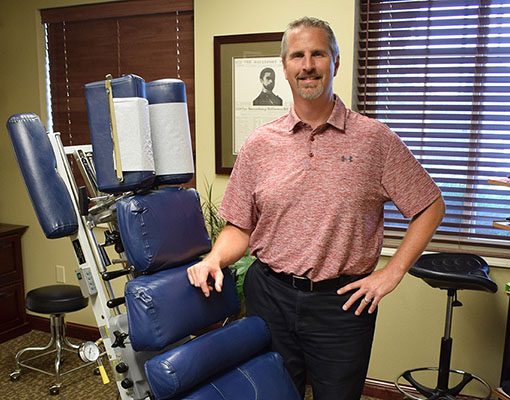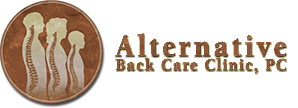Causes and Treatments
Neck Pain
CERVICAL SPRAIN/STRAIN (AKA WHIPLASH)

Whiplash is a generic term for a sprain/strain injury to the neck. It is most commonly associated with car accidents, but also occurs with any mode of onset that “whips†the neck, such as slips and falls, and sports (e.g. football, soccer, etc). The whipping motion causes small tears in muscles, ligaments, and/or discs; severe injuries can cause complete muscular tears, disc herniations/bulges, or even fractures. Healing time can be a couple of weeks to years depending on the severity of the injury.
Strains are injuries to muscles and tendons. Sprains are injuries to ligaments. Chiropractic treatment consists of spinal adjustments to non-mobile joints, massage therapy, electric muscle stimulation, ultrasound, and rehabilitation methods.
DISC HERNIATIONS

The main complaints with disc herniations are neck and arm pain. Usually onset follows a neck injury; however it may not be related to any specific incident and can be due to disc degeneration. The symptoms are usually neck pain, tingling and/or numbness in the arm, deep ache in the arm, and sometimes weakness in the hand. Some patients get relief by placing their arm on their head.
Care in our office consists of spinal adjustments around the area of the herniations. The force of the adjustment for this problem is always the least possible for patient comfort. Modalities such as ultrasound and electric muscle stimulation are used as well as specific rehab exercises and cervical traction if needed. There are different levels of disc problems. Note that a disc is like the inner part of a tree, with the center pith surrounded by the rings. Bulge = the nucleus (or center of the disc) leaks out through tears in the annulus (outer rings) and pushes the outer wall of the disc outward. Herniation = the nucleus breaks through the outer walls of the annulus and leaks into the canal space. Sequestered prolapse = part of the nucleus breaks off in the canal space and becomes a free-floating segment.
FACET SYNDROME

Facet is the medical term for the joints of the vertebrae. This syndrome can be associated with minor trauma (e.g. sudden turning of head) but can also occur without recent trauma. When these joints are "pinched" together they compress nerves especially in extension movements. It can sometimes radiate pain down the outer arms. Chiropractic manipulation of the spine is the treatment of choice. Other measures include electric muscle stimulation, ultrasound, and trigger point therapy.
THORACIC OUTLET SYNDROME (TOS)

The patient tends to present with diffuse arm symptoms, including numbness and tingling, most often travels down inside of arm to ring and little fingers. It is often made worse by overhead activities. The brachial plexus is a bundle of the C5-T1 nerve roots that converge between the neck and the shoulder. These nerves and associated blood vessels can be "pinched" in 4-5 different areas in that small region. Proper diagnosis of which area is causing the TOS is very important.
Conservative care is the best choice of management for TOS. Our care consists of spinal adjustments, rehab measures that consist of postural correction, trigger-point therapy, electric muscle stimulation, and ultrasound. Surgery is only recommended for those that do not respond to conservative management.
TORTICOLLIS

There are two main types of torticollis (aka wry neck): congenital and adult.
Congenital torticollis is usually associated with birth trauma or bad positioning of the fetus in the uterus. The baby presents with constant, tilting and rotation of its head and cannot keep its head straight or upright. Chiropractic care at our office consists of low-force spinal adjustments and physical therapy to lengthen the shortened SCM muscle. The therapy must be consistent for best results. Surgery may be needed in severe cases. Adult torticollis occurs actually in people from toddler stage up to senior citizens. It is a severe spasm of the SCM muscle in the neck, which causes the head to rotate and tip to the side with intense pain. Chiropractic adjustments to the upper thoracic spine as well as to the neck are very successful. Electric muscle stimulation may also be used along with stretching.
Why Choose Us?

Because Dr. Bunkers LOVES his job!
-
We do not
require lengthy treatment plans
-
We treat
neck and back problems, headaches, joint problems of the arms and legs such as shoulders, knees, etc.
-
We treat
the entire family from infants to senior citizens
-
We focus
on treating the problem and getting you functioning as soon as possible
-
We help
with your insurance questions
-
We will
refer out for second opinions if your condition does not improve
